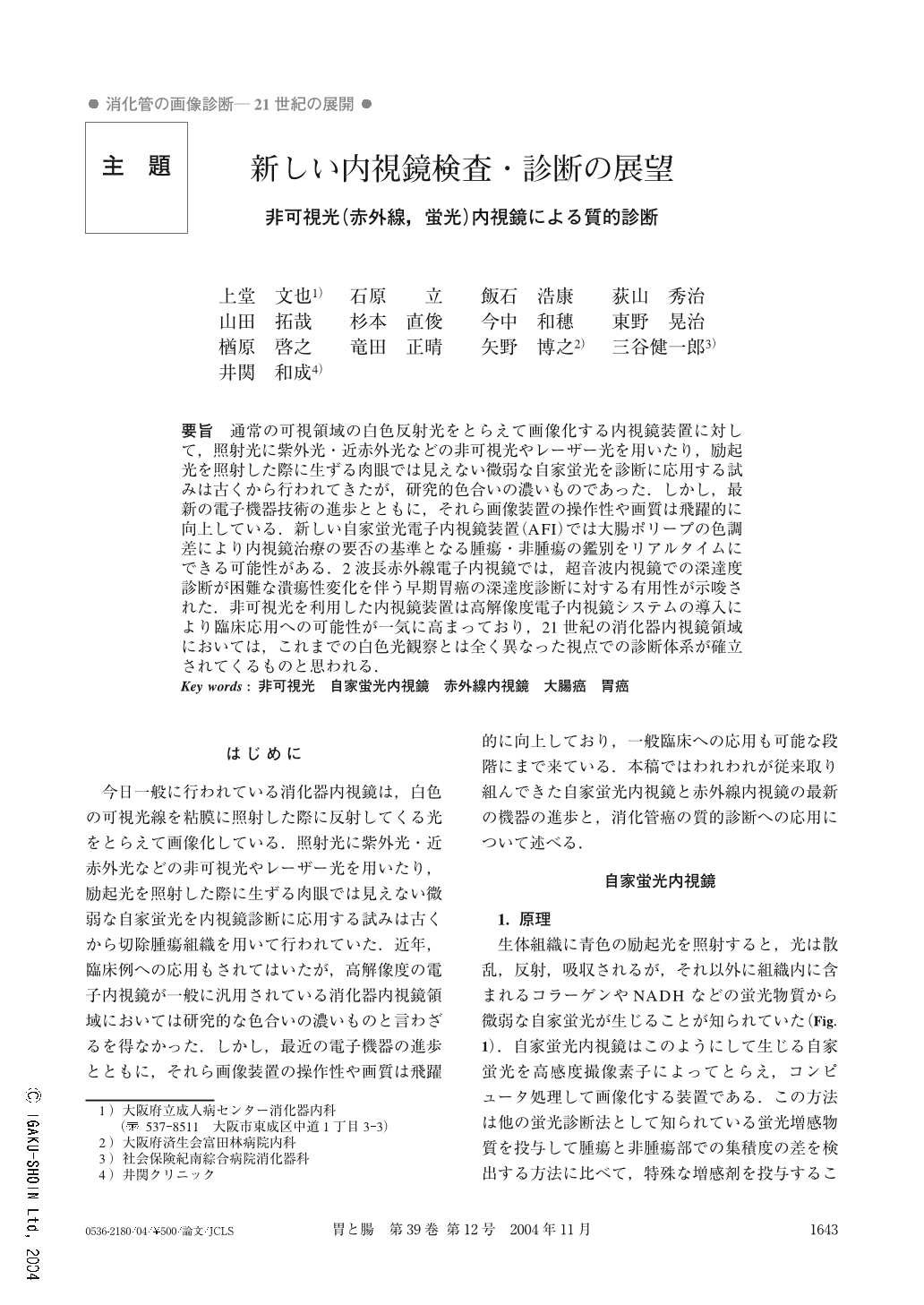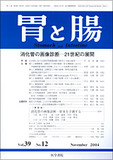Japanese
English
- 有料閲覧
- Abstract 文献概要
- 1ページ目 Look Inside
- 参考文献 Reference
- サイト内被引用 Cited by
要旨 通常の可視領域の白色反射光をとらえて画像化する内視鏡装置に対して,照射光に紫外光・近赤外光などの非可視光やレーザー光を用いたり,励起光を照射した際に生ずる肉眼では見えない微弱な自家蛍光を診断に応用する試みは古くから行われてきたが,研究的色合いの濃いものであった.しかし,最新の電子機器技術の進歩とともに,それら画像装置の操作性や画質は飛躍的に向上している.新しい自家蛍光電子内視鏡装置(AFI)では大腸ポリープの色調差により内視鏡治療の要否の基準となる腫瘍・非腫瘍の鑑別をリアルタイムにできる可能性がある.2波長赤外線電子内視鏡では,超音波内視鏡での深達度診断が困難な潰瘍性変化を伴う早期胃癌の深達度診断に対する有用性が示唆された.非可視光を利用した内視鏡装置は高解像度電子内視鏡システムの導入により臨床応用への可能性が一気に高まっており,21世紀の消化器内視鏡領域においては,これまでの白色光観察とは全く異なった視点での診断体系が確立されてくるものと思われる.
Although many attempts have been made so for to apply invisible lights (ultraviolet, near-infrared, laser, autofluorescence, etc...) in the diagnosis of esophago-gastrointestinal neoplasms, the approaches have been somewhat experimental. However, recent advanced technology brings marked improvement to some endoscopic imaging systems in both image quality and manipulability. A novel autofluorescence videoendoscopy system, AFI, can detect colon polyps as a well contrasted magenta or purple color in green normal mucosa and can differentiate neoplastic tumors from non-neoplastic polyps by their color tones. A dual wave near-infrared videoendoscopy system can show vessels underneath mucosal epithelium as cyan color after intravenous injection of indocyanine green. The endoscopic appearance of staining patterns in patients with depressed-type early gastric cancer with or without ulcerative change is useful for diagnosis of depth of cancer invasion. The new videoendoscopy systems using invisible light are now advanced enough for clinical application. In the 21st century, they will be able to establish diagnostic strategy for the digestive tract from the varying color patterns, shades and contrasts that the videoendoscopy systems are able to reveal.
1) Department of Gastrointestinal Oncology Osaka Medical Cancer for Cancer and Cardiovascular Diseases, Osaka, Japan

Copyright © 2004, Igaku-Shoin Ltd. All rights reserved.


